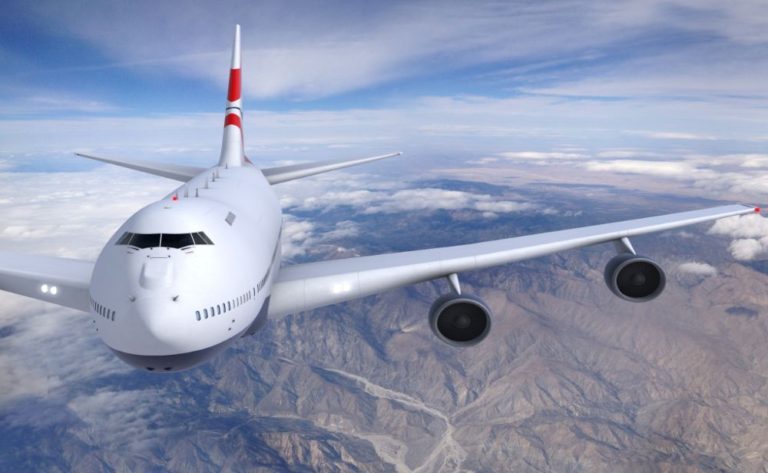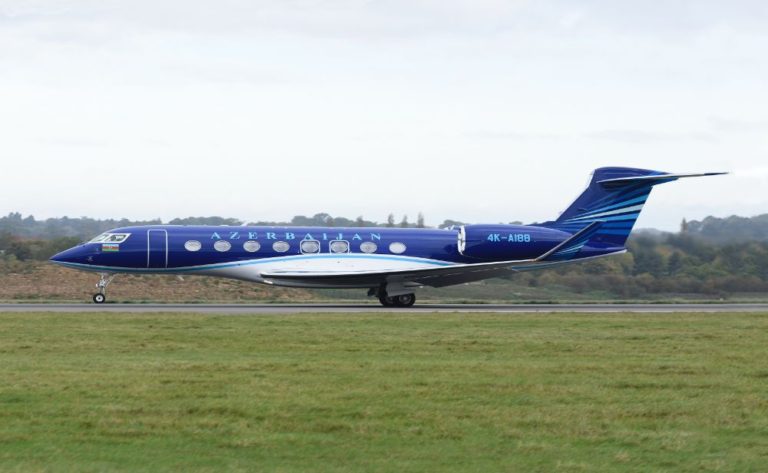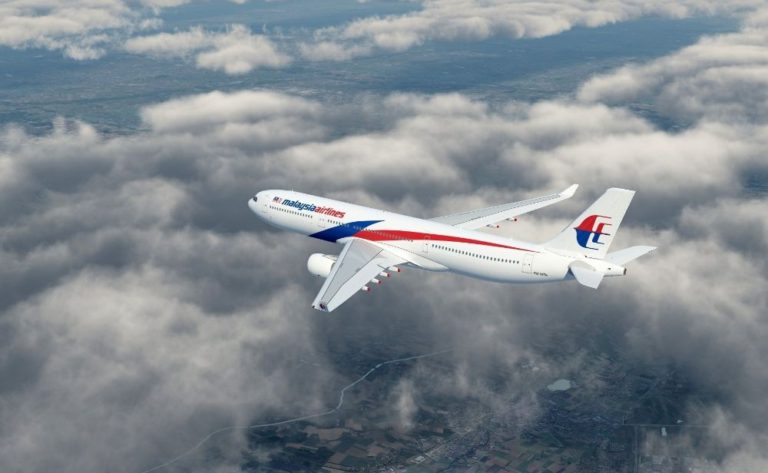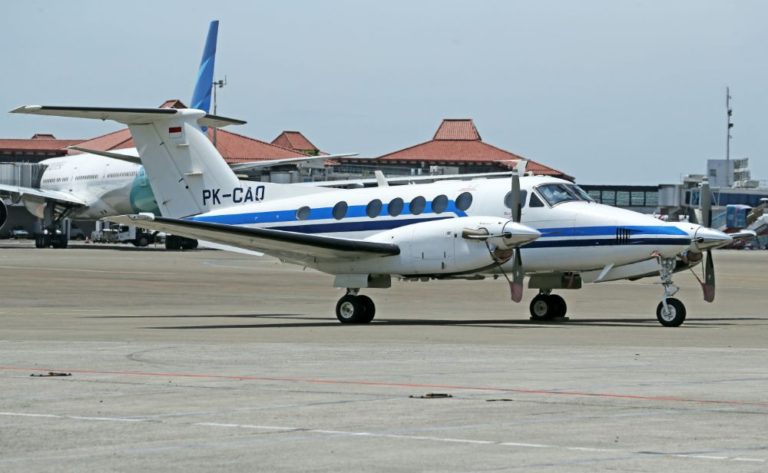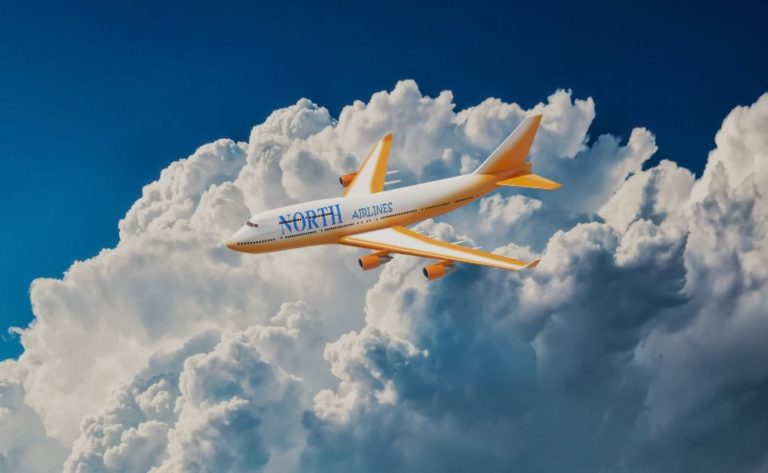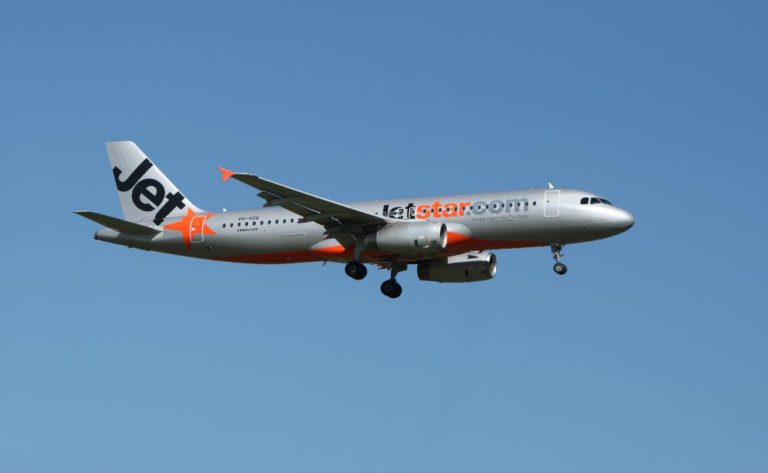Beechcraft Premier 1A Guide and Specs

Introduction
The Beechcraft Premier 1A is still a lightweight aircraft that has been certified and offers a cabin that is of a real medium size. Because it is constructed out of lightweight composite materials, the Premier 1A has a maximum gross takeoff weight of 12,500 pounds. It can seat six passengers, plus two crew members, or seven passengers when flown by a single pilot.
The Beechcraft Premier 1A utilises tricycle gear, an empennage in the shape of a T, and a low wing that is cranked and rear-swept. The Premier 1A was one of the first private aircraft to adopt the pot-bellied design, which is becoming an increasingly commonplace design. It was one of the first aircraft to employ this design.
The layout of the main cabin makes it possible for the aircraft to remain in the category of light jets despite being on par with the main cabins of mid-sized aircraft.
The interior features six movable seats arranged in a club format, and if the cockpit is set up for single-pilot operation, there is room for a seventh passenger to ride along with the pilot. The club lounge and the cockpit are separated by a compact kitchen, and the aft area of the ship features a private lavatory that is, however, quite basic.
Beechcraft’s first aircraft, the Premier 1, served as the basis for the creation of the 1A, which went into production with a serial number of 435 in the last quarter of 2005. Soundproofing was improved throughout the Premier 1A, which led to an increase in overall passenger comfort. In addition to addressing a number of concerns with the manner in which the aircraft behaved while taxiing, the cockpit was also given a comprehensive makeover.
The temperature control system is another another component of the Premier 1A that contributes to the aircraft’s overall appeal as a location for travel, not just for passengers but also for the crew. When compared to the cabin, the temperature in the cockpit of an aeroplane might be several degrees higher.
The temperature of the cabin and the cockpit of the Premier 1A may be controlled independently of one another, so the crew won’t have to choose between being overheated and putting the passengers through the ringer.
The fuselage of the aircraft is far thinner than that of a normal private jet thanks to the utilisation of composite material, which also contributes to the aircraft’s overall reduction in weight. Because it is constructed out of lightweight materials, the Premier 1A is able to give passengers with a more spacious and well-appointed cabin than many other aircraft that are in the same weight category.
Beechcraft Premier 1A Specs
Details of the Interior
• Seating for either six passengers plus two crew members or seven passengers including the pilot.
• The length of the cabin is 13 feet 6 inches (4.1 metres)
• The width of the cabin is 5 feet 6 inches (1.6 metres)
• Cabin height: 5 feet 5 inches 1.5 metres
Storage Specifications
• Two storage boxes located on the exterior
• 150 pounds and 10 cubic feet of storage space in the front nose • 400 pounds and 44 cubic feet of storage space in the rear aft
• There is a capacity of 140 pounds and 20 cubic feet in the restroom.
Exterior Specs
• Length: 46 feet; Height: 15 feet 4 inches; Wingspan: 44 feet 6 inches; Wing Area: 247 square feet; Length: 46 feet; Height: 15 feet 4 inches
Specifications and Data
• Powerplant: Two FJ44-2A Williams International Model
• Wing loading: 50.6 pounds per square foot
• Power loading: 2.72 pounds per horsepower
Specifications for Payload, Weight, and Fuel
• Zero fuel weight: 10,000 lbs. • Max useful load: 4,040 lbs.
• Payload with full fuel: 370 lbs. • Max landing weight: 11,600 lbs.
• Useable fuel capacity: 547 gallons / 3,670 lbs.
• Fuel consumption: 138 gallons per hour / 828 lbs per hour.
• Maximum takeoff weight: 12,500 lbs.
• Maximum ramp weight: 12,590 lbs.
• Maximum takeoff weight: 12,500 lbs
Avionics Specs Pro-line 21, which is a division of Raytheon, Beechcraft, and Textron, is the company that provides the avionics suite that is largely furnished by Rockwell and Collins. In addition, they offer a complete upgrade package for the Premier 1A.
Beechcraft Premier 1A Prices
Depending on the itinerary, the destination, and the number of passengers, the cost of chartering a Beechcraft Premier 1A will be somewhere in the neighborhood of $3,000 per hour.
The year an aircraft was manufactured, avionics updates, and the amount of hours it has flown since its most recent major maintenance will all have a significant impact on the price at which it can be purchased. The quality of the maintenance package that the owner of the aircraft has acquired for it is another aspect that needs to be taken into consideration.
At the time of its inception in 2001, the original Beechcraft Premier 1 was marketed with a suggested retail price of $5 million. After five years of production of the Premier 1, inflation also had its imprint on the retail value of the product. This resulted in the revised and redesigned Premier 1A having a higher manufacturing cost.
In 2006, the Premier 1A made its debut on the market with a suggested retail price of $7 million. The Beechcraft Premier 1A has seen depreciation in the 15 years since its inception, which has resulted in an average resale value that falls between between $1,350,000 and $2,800,000.
Beechcraft Premier 1A Operating Expenses and Preventative Maintenance Timetable
Beechcraft has provided an announcement on an update to the needed scheduling for the Premier 1 and 1A. At first, the corporation stipulated that inspections need to be carried out every 200 hours. Following a substantial amount of user input and investigation, the timetable was modified to stipulate an A-class inspection every 600 hours and an A-class inspection along with a B-class inspection every 1,200 hours.
In spite of this, there will be maintenance that needs to be performed at intervals of 200 hours, such as lubrication, engine checks, and requirements outlined in “Chapter 4”.
Annual Breakdown of Fixed Expenses
• Crew: $225,000
• Hanger: $22,000
• Insurance for the Hull: $3,000
• The limit on your liability insurance is $25,000
• Miscellanious: $7,000
The total amount of annual fixed costs is 282,000 dollars.
If the aeroplanes is set up so that it can be flown by a single person, the costs associated with the crew can be cut significantly.
A Breakdown of the Variable Costs
The following estimates for annual variable expenses are based on an assumption of 300 hours of operation and a price of $5 per gallon for gasoline (as per the current global average). On the basis of a purchase price of $2 million, the rate of depreciation is determined to be 11%.
• Fuel: $195,000
• Cost of repairs and upkeep: $45,000 • Fuel and oil reserves: $88,500
• Miscellaneous: $44,500
• The amount of depreciation is $220,000
593 000 dollars in total annualised fixed operating expenses
The Beechcraft Premier 1A now has a total yearly operating cost of 875,000 dollars as a result of this.
The Beechcraft Premier 1A’s Performing Capabilities and Grip
The Premier 1A has fowler flaps installed on the trailing edge of its wings since the wing area is not particularly large. Because to the cranked wing design, the flaps are likewise divided into inboard and outboard pieces. Due to the fact that the flaps take up such a large portion of the trailing edge, there is not much room left over for the ailerons.
It was decided to install spoilers on the wings in order to make up for the relatively small size of the ailerons. The effect of deploying the ailerons and spoilers to assist with roll effectiveness is not even registered in the cockpit. This is because the ailerons and spoilers are deployed at a ten-degree angle. During the landing process, the spoilers also perform the function of a lift-dump.
On the original Premier 1, the lift-dump function was supposed to be actuated by “squat switches” on the undercarriage, which were triggered when the vehicle touched the ground. During the tests, the switches performed admirably; nevertheless, when put to use in actual situations, the system exhibited less than ideal performance.
Because it took some time for the squat switches to re-deploy the spoilers after the aircraft bounced on the runway, the braking performance was negatively affected. The Premier 1A’s lift-dump system featured an activation handle located on the centre console, which pilots could use to take manual control of the system. After that, the manual lift-dump system was installed in every single one of the Premier 1s that came before it.
Because the lift-dump system is turned off during all of the other stages of flight, it is impossible for the system to be activated by accident. However, the pilot’s inability to deactivate the lift-dump in 2014 was one of the contributing reasons that led to the accident that occurred that year.
While the pilot of a Premier 1A was conducting the approach at Thompson-McDuffie county airport, the anti-skid failure light illuminated in the cockpit of the aircraft. After experiencing difficulties with the landing, the pilot made an effort to perform a “go-around.”
The aircraft’s ability to rise was hindered as a result of the lift-dump mechanism not being deactivated as it should have been. The collision resulted in the fatalities of all five passengers and severe injuries for both members of the crew.
The Premier 1 has always had reliable brakes, but the 1A has improved stopping power thanks to a revised braking linkage. The first iteration of the braking system featured a delay between depressing the brake pedal and the system responding by applying the brakes.
Because of this, the plane behaved erratically when it was taxiing on the runway. The issue was resolved totally once Beechcraft updated the Premier 1A’s braking linkage and made the necessary adjustments.
The Premier 1A performs exceptionally well in the air and is ranked 15th on the list of light jets with the highest speed. Although it travels at cruising speeds that are slower than its most direct competitors, the Premier 1A has a cabin that is noticeably larger.
The time-to-climb is fairly outstanding, reaching 37,000 feet in less than 20 minutes in real-world operation. Additionally, at FL410 in cold conditions, the Premier 1A will cruise exhibiting Mach 0.79 with 448 knots true airspeed.
The controls are comfortable to hold thanks to their neutral weight that falls anywhere between light and heavy. However, the Premier 1A provides the pilot with the greatest confidence boost when it is used to land in less than ideal conditions. Because of the improved brakes of the Premier 1A and the lift-dump spoilers, it is occasionally feasible to make a midfield turn-off even when there is heavy rain and a crosswind of 25 mph. This is because these two features work together so well.
Improvements and Alterations Made to the Beechcraft Premier 1A
There have been a few important alterations made to the initial design, and those adjustments are now featured on the Premier 1A. On the other hand, the most of these will have already been implemented into the original Premier 1 aircraft that are still in operation, effectively bringing them up to the quality of the 1A.
The following is a list of the services, upgrades, and maintenance plans that can be purchased for the Premier 1A from Beechcraft Pro-line 21.
• Wall-to-wall ADI ADF 3010E for all applications.
• Lightpath vector
• Integrated ADS-B annunciation
• Enhanced engine indicator
• AVP (TAWS mode 5 monitoring compliance)
• FMS 4.x RNAV GP approach
• FMS 4.2 RF legs (curved approach)
• Approaches based on the LPV and XYZ planes
• FMS Runway depiction on SVS
• Increased database memory
• RNP1 /RNP2 /RNP 4 • LPV (EASA APV)
• Beyond N73 and S60 • WAAS GPS
• ADS-B (V2) Transponder upgrade
• IFIS Version 6 Electronic charts
• Optional runway database
• XM WX Satellite weather
• ARINC Graphical weather
• IMS-3500
• Synthetic vision system on the primary flight display
• Airshow 500
• MFD Video
• Corporate Aircraft Service Plan
• Second FMS GPS
• TCAS-II
• VHF data link
• High-frequency radio HF 9000
• (CASP)
Beechcraft Premier 1A The Best Places to Look for Replacement Components
Collins Aerospace is the manufacturer of the avionics that come standard on the Premier 1A, but there are many other places to look than the manufacturer to acquire replacement parts.
Allaero.com is a company that operates out of the United Kingdom that supplies aviation parts for a variety of private jet aircraft, one of which is the Beechcraft Premier 1A.
Beechcraft Premier 1A Model Common Problems
When Beechcraft declared, in response to mounting financial pressures, that the firm would no longer be producing private jets, consumers expressed concern that the supply of components for already-existing aircraft would shrink and eventually become difficult to find. Textron came to the rescue, and one of its subsidiaries, Pro-line 21, immediately began producing components for the private aircraft that Beechcraft was building.
It was rumoured that the cabin of the first Beechcraft Premier 1 was loud, and its performance on the ground was criticised for leaving much to be desired. These problems were resolved with the Premier 1A, which also made the cockpit far more spacious. The majority of the original Premier 1 aircraft still in service have been retrofitted with some or all of the enhancements that were introduced with the Premier 1A model.
The inability to dispose of waste from the lavatory in an expedient manner when it is located outside the aircraft is the primary source of dissatisfaction among pilots who fly the Premier 1A. Because of this, the majority of pilots emphasise that the restroom should only be used in the event of an emergency. Even after the bathroom has been rebuilt to include a full flushing lavatory, any repair that needs to be done must be done carefully inside the cabin.
Options for Insurance for the Beechcraft Premier 1A
The Premier A1, just like any other aircraft, is eligible for insurance for both liability and hull coverage. Certain airports mandate that aircraft have liability insurance before landing. The scope of the liability insurance policy extends beyond the aeroplane itself and includes protection against mishaps that may take place inside the hangar where the plane is kept.
Accidents that occur outside of the aircraft and cause damage or injury to third parties or their property are covered by the liability insurance. In the event of an accident, liability will also cover medical expenses and other costs associated with passenger injuries.
The annual premium for insurance for a Beechcraft Premier 1A with liability coverage of $1 million and hull damage coverage of $2 million will be something in the neighbourhood of $15,000. At the moment, there are 8 different firms, including BWI fly, that provide insurance coverage for the Beechcraft Premier 1A.
The Beechcraft Premier 1A comes with a selection of optional maintenance plans, in addition to the usual levels of insurance coverage. A cost of roughly $16,000 is paid annually by the customer in order to have Rockwell’s plan replace any faulty avionics equipment that may be covered under the plan.
The cost of replacing a single component in the cockpit can sometimes cost as much as this annual charge, and owners and operators believe that the investment is well worth it despite the fact that it can sometimes reach that level.
Beechcraft Premier 1A Model Resale Value
The total number of flying hours that an aircraft has logged is a significant factor that plays a significant role in determining its resale value. The maintenance plan, as well as the proximity of the aircraft to its next major maintenance overhaul, are also additional crucial aspects to take into consideration.
The resale value of a Beechcraft Premier 1A is typically somewhere in the range of $1,350,000 and $2,800,000.
Beechcraft Premier 1A Owner Reviews
Owners of the Premier 1A are known to be a vociferous bunch, and in general, they have a great deal of affection for their aircraft. Textron was able to save Beechcraft as a result of the demands that were made by owners. The owners of the aircraft are so attached to it, despite the fact that little over 450 of them have been produced, that they have refused to allow the production of replacement components to fail.
The Premier 1A is a very quick and straightforward aircraft to fly, and the improvements that have been made to the cockpit make the pre-flight procedure very simple. One thousand nanometers of range is the sole place in which it falls short. Although many of the other citation jets in the same class have a longer range, the Premier 1A outperforms them in terms of both comfort and speed.
Beechcraft Premier 1A Similar Aircraft
Both the Cessna Citation 2+ and the Beechcraft Premier 1A are excellent aircraft that can be compared to one another. Each has a maximum takeoff weight of 12,500 pounds in common. Both aircraft consume 143 gallons of fuel per hour at full load, although the Citation has a little greater range than the other due to its larger fuel tank. However, their efficiency figures are virtually identical.
The maximum payload of the Cessna Citation 2+ is greater than that of the Cessna Premier 1, increasing by 300 pounds over the Premier 1 and by 400 pounds over the Premier 1A. The Premier 1 and Premier 1A most clearly differentiate themselves from the Citation in the manner in which their cabins are designed.
The Premier 1/1A has almost 15 percent more cubic feet of space inside the cabin than the Citation does, and it also has higher headroom with a height of 5 feet 4 inches rather than 4 feet 75 inches.
Even though the Premier 1A is faster than the Citation, which means it can complete journeys of up to 1000 nautical miles (nm) in less time, the Citation has an additional range of almost 400 nm. When compared to the Citation 2, which can only climb at a rate of just over 3,000 feet per minute, the Premier 1A is capable of climbing at a rate of 4,000 feet per minute.
Check out our post on this website on the Cessna Citation Mustang if you are interested in purchasing an ultralight jet.
Beechcraft Premier 1A Clubs You can Join
The Premier Jet Owners club, also known as PJO, was established so that owners and operators of Beechcraft Premier 1 and 1A aircraft could come together as a community and connect with one another. In addition to this, the goal is to portray a cohesive front to the greater aviation community.
Owners and operators of the Beechcraft Premier 1 and 1A are the only people who are eligible to become members of premierjetowners.com.
The acronym for “Frequently Asked Questions” is “FAQ.”
Find out how much a Beechcraft Premier 1A costs by reading this guide.
Answer: Between $1,350,000 and $2,800,000
What kind of speeds can you expect to get in the Beechcraft Premier 1A?
Answer: 523mph / 841kmh / 454kn
How quickly does the Premier 1A reach higher altitudes?
Answer: 4,000fpm (feet per minute)
Is it possible to fly the Beechcraft Premier 1A with just one pilot at the controls?
The Premier 1 and 1A may both be flown by a single crew member provided their cockpits are set up to accommodate a single pilot. This is required for the aircraft to receive certification.
